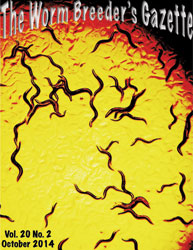b274 is the reference allele in WormBase for par-1. PAR-1 is a cell polarity kinase localized to the posterior cortex of the zygote (Guo and Kemphues, 1995). Here we present evidence that b274 is not a null allele.
Two lines of evidence in the literature already suggested that b274 retains some par-1 activity: 1) b274 generates a truncated (86kD) PAR-1 protein (Hurd and Kemphues, 2003) and 2) a par-1-dependent phosphorylation site in MEX-5 is still phosphorylated in b274 (Tenlen et al., 2008).
We have sequenced b274 and have found that it codes for a premature STOP codon at Q814. Consistent with the observed 86kD molecular weight, b274 codes for a truncated protein containing the complete PAR-1 kinase domain but lacking the PAR-1 C-terminus. Using GFP fusions, we have shown that the PAR-1 C-terminus is essential for localization to the posterior cortex of the zygote. GFP:PAR-1 fusions lacking the C-terminus localize throughout the cytoplasm of the zygote.
To determine whether b274 encodes an active but delocalized kinase, we examined MEX-5 mobility. MEX-5 is a cytoplasmic protein that localizes to the anterior of the zygote in a par-1-dependent manner (Schubert et al., 2000). PAR-1 stimulates MEX-5 mobility in the posterior cytoplasm (Tenlen et al., 2008) by direct phosphorylation on two residues (Griffin and Seydoux, unpublished). We found that b274 zygotes show uniformly high MEX-5 mobility. In contrast, par-1(RNAi);par-1(b274) zygotes show uniformly low MEX-5 mobility as do par-1(it51) zygotes (it51 is a missense mutation in the kinase domain- (Guo and Kemphues, 1995). Remarkably, par-1(RNAi), b274 and it51 zygotes all fail to localize MEX-5 and cannot be distinguished by visual inspection of MEX-5 distribution alone.
We conclude that b274 is a not a null allele of par-1. it32 (Q797STOP) and it61 (Q608STOP) also code for premature stops downstream of the kinase domain and may also be non-nulls.
References
Guo S and Kemphues KJ. (1995). par-1, a gene required for establishing polarity in C. elegans embryos, encodes a putative Ser/Thr kinase that is asymmetrically distributed. Cell 81, 611-620. 
Hurd DD and Kemphues KJ. (2003). PAR-1 is required for morphogenesis of the Caenorhabditis elegans vulva. Dev Biol 253, 54-65. 
Schubert CM, Lin R, de Vries CJ, Plasterk RH, and Priess JR. (2000). MEX-5 and MEX-6 function to establish soma/germline asymmetry in early C. elegans embryos. Mol Cell 5, 671-682. 
Tenlen JR, Molk JN, London N, Page BD, and Priess JR. (2008). MEX-5 asymmetry in one-cell C. elegans embryos requires PAR-4- and PAR-1-dependent phosphorylation. Development 135, 3665-3675. 




